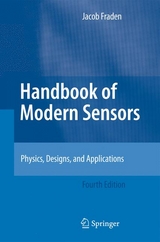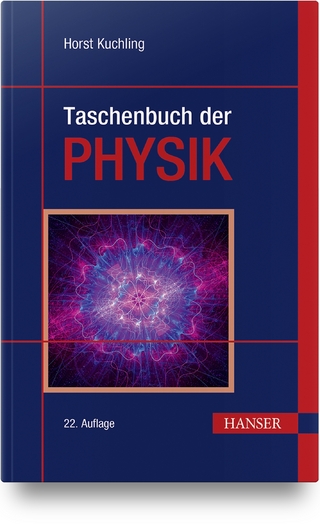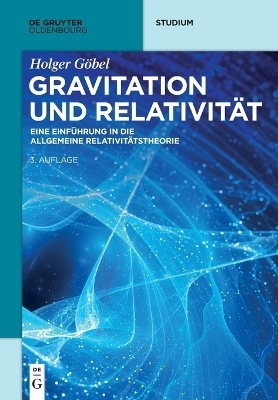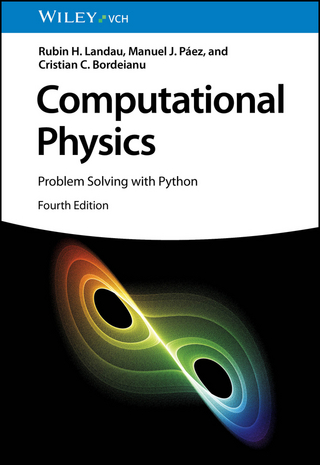
Handbook of Modern Sensors
Physics, Designs and Applications
Seiten
2003
|
3rd Revised edition
Springer-Verlag New York Inc.
978-0-387-00750-2 (ISBN)
Springer-Verlag New York Inc.
978-0-387-00750-2 (ISBN)
- Titel erscheint in neuer Auflage
- Artikel merken
Zu diesem Artikel existiert eine Nachauflage
Focusing on sensors, this book includes sections on practical designs and use of the modern micro-machining technologies. It is suitable for students, researchers interested in modern instrumentation, sensor designers, application engineers and technicians whose job it is to understand, select and/or design sensors for practical systems.
This book is about devices commonly called sensors. Digital systems, however complex and intelligent they might be, must receive information from the outside world that is generally analog and not electrical. Sensors are interface devices between various physical values and the electronic circuits who 'understand' only a language of moving electrical charges. In other words, sensors are the eyes, ears, and noses of silicon chips. Unlike other books on sensors, this book is organized according to the measured variables (temperature, pressure, position, etc.) that make it much more practical and easier to read. In this new edition recent ideas and developments have been added while less important and non-essential designs were dropped. Sections on practical designs and use of the modern micro-machining technologies have been revised substantially. This book is a reference text that can be used by students, researchers interested in modern instrumentation (applied physicists and engineers), sensor designers, application engineers and technicians whose job it is to understand, select and/or design sensors for practical systems.
The scope of this book is rather broad covering many different designs. Some are well known, but describing them is still useful for students and those who look for a convenient reference. It is the author's intention to present a comprehensive and up-to-date account of the theory (physical principles), design, and practical implementations of various sensors for scientific, industrial, and consumer applications. From the reviews: 'A very useful book! It strikes an excellent balance between a large variety of different sensor types and moderate description of each to yield a book of reasonable length! Provides excellent information on all types of physical measurements. I recommend it highly' - "Biomedical Instrumentation & Technology". 'Jacob Fraden has produced a valuable, single-volume reference on the devices that bridge the analog and digital worlds' - Lawrence Rubin, MIT. From the reviews of the third edition: 'This is a weighty volume of nearly 600 pages. The book is undoubtedly useful as a source of reference. The large number of sensors described in it, and the consideration of underlying principles of operation should help people' - Allan Hobson, "Robotica", Vol.
23, 2005. 'This book handles the basic and absolutely most important common areas of all sensor applications. It gives a good overview of a very wide range of sensor applications, which is not found in many other books in such a detailed form. This book is useful for everybody who works with any kind of measurement technique. For beginners it is a good introduction to the world of sensors. For advanced users it is a good and extensive handbook and help' - Rudiger Frank, "Analytical and Bioanalytical Chemistry", Vol. 382, 2005. 'This book aims for breadth and to be a reasonably comprehensive account of most modern sensors. The Handbook is a readable reference text for researchers, graduate students and engineers. Don't read this book if you don't want to know how the sensors work. If, however you want to understand how a sensor works, the principle behind it or use all that sensors have to offer technically, then this book is for you' - Stephen Kukureka Fimmm, "Materials World", Vol. 13 (2), February, 2005.
This book is about devices commonly called sensors. Digital systems, however complex and intelligent they might be, must receive information from the outside world that is generally analog and not electrical. Sensors are interface devices between various physical values and the electronic circuits who 'understand' only a language of moving electrical charges. In other words, sensors are the eyes, ears, and noses of silicon chips. Unlike other books on sensors, this book is organized according to the measured variables (temperature, pressure, position, etc.) that make it much more practical and easier to read. In this new edition recent ideas and developments have been added while less important and non-essential designs were dropped. Sections on practical designs and use of the modern micro-machining technologies have been revised substantially. This book is a reference text that can be used by students, researchers interested in modern instrumentation (applied physicists and engineers), sensor designers, application engineers and technicians whose job it is to understand, select and/or design sensors for practical systems.
The scope of this book is rather broad covering many different designs. Some are well known, but describing them is still useful for students and those who look for a convenient reference. It is the author's intention to present a comprehensive and up-to-date account of the theory (physical principles), design, and practical implementations of various sensors for scientific, industrial, and consumer applications. From the reviews: 'A very useful book! It strikes an excellent balance between a large variety of different sensor types and moderate description of each to yield a book of reasonable length! Provides excellent information on all types of physical measurements. I recommend it highly' - "Biomedical Instrumentation & Technology". 'Jacob Fraden has produced a valuable, single-volume reference on the devices that bridge the analog and digital worlds' - Lawrence Rubin, MIT. From the reviews of the third edition: 'This is a weighty volume of nearly 600 pages. The book is undoubtedly useful as a source of reference. The large number of sensors described in it, and the consideration of underlying principles of operation should help people' - Allan Hobson, "Robotica", Vol.
23, 2005. 'This book handles the basic and absolutely most important common areas of all sensor applications. It gives a good overview of a very wide range of sensor applications, which is not found in many other books in such a detailed form. This book is useful for everybody who works with any kind of measurement technique. For beginners it is a good introduction to the world of sensors. For advanced users it is a good and extensive handbook and help' - Rudiger Frank, "Analytical and Bioanalytical Chemistry", Vol. 382, 2005. 'This book aims for breadth and to be a reasonably comprehensive account of most modern sensors. The Handbook is a readable reference text for researchers, graduate students and engineers. Don't read this book if you don't want to know how the sensors work. If, however you want to understand how a sensor works, the principle behind it or use all that sensors have to offer technically, then this book is for you' - Stephen Kukureka Fimmm, "Materials World", Vol. 13 (2), February, 2005.
Data Acquisition.- Sensor Characteristics.- Physical Principles of Sensing.- Optical Components of Sensors.- Interface Electronic Circuits.- Occupancy and Motion Detectors.- Position, Displacement, and Level.- Velocity and Accleration.- Force, Strain and Tactile Sensors.- Pressure Sensors.- Flow Sensors.- Acoustic Sensors.- Humidity and Moisture Sensors.- Light Detectors.- Radiation Detectors.- Temperature Sensors.- Chemical Sensors.- Sensor Technologies.- Appendix.
| Erscheint lt. Verlag | 16.1.2004 |
|---|---|
| Zusatzinfo | 403 black & white illustrations, 60 black & white tables |
| Verlagsort | New York, NY |
| Sprache | englisch |
| Maße | 234 x 156 mm |
| Gewicht | 2260 g |
| Einbandart | gebunden |
| Themenwelt | Naturwissenschaften ► Physik / Astronomie |
| Technik ► Nachrichtentechnik | |
| ISBN-10 | 0-387-00750-4 / 0387007504 |
| ISBN-13 | 978-0-387-00750-2 / 9780387007502 |
| Zustand | Neuware |
| Haben Sie eine Frage zum Produkt? |
Mehr entdecken
aus dem Bereich
aus dem Bereich
Eine Einführung in die Allgemeine Relativitätstheorie
Buch | Softcover (2023)
De Gruyter Oldenbourg (Verlag)
64,95 €
Problem Solving with Python
Buch | Softcover (2024)
Wiley-VCH (Verlag)
109,00 €



